Hunters Classroom Projects
Make A Model Of An Alaska Native Hunter’s Hat (Chagudax) – A good project to do ahead of time, to then be worn during the hunting (fishing) activity down in Fort Ross Cove.
Please note that though the following was written in a way that indicates these are cultural practices of the past, these traditions are alive and practiced by some Alaska Native peoples today.
Excerpts from Glory Remembered: Wooden Headgear of Alaska Sea Hunters: Symbols of Power and Identity by Lydia T. Black
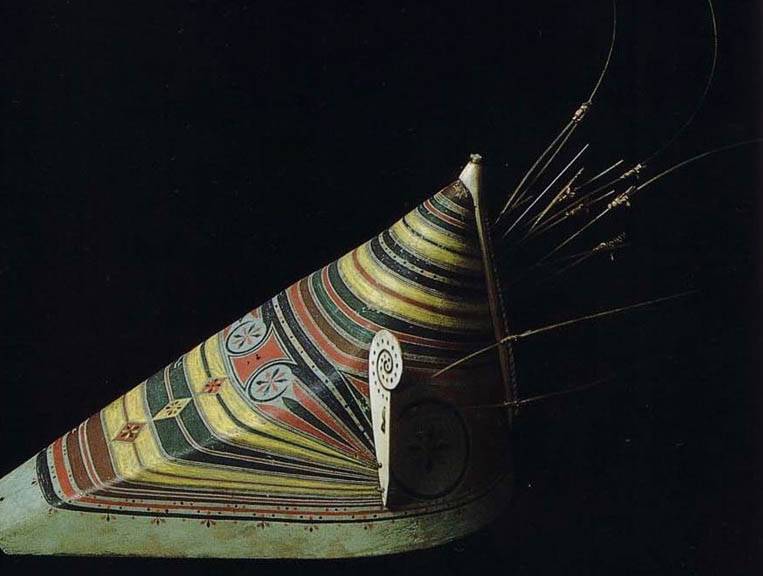
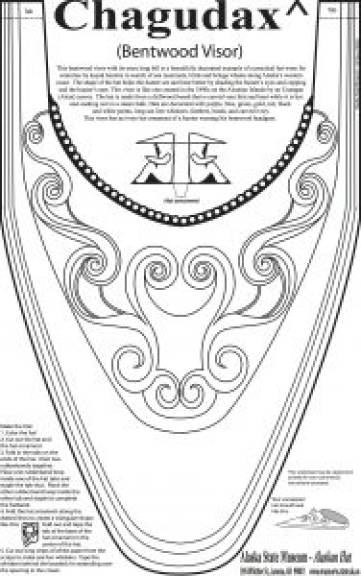
“In historic times wooden headgear in Alaska was very diverse. There were three different types of wooden headgear: closed-crown hats, open-crown hats, and visors. They were made of bentwood with long or cone visors or hollowed-out wood. [They] used a maximum of four colors: red, black, ochre-yellow (or brown), turquoise or blue-green to decorate their hats. Kodiak Islanders used red, white, green, and black. Experts agree that the headgear had symbolic function. It was used exclusively in association with sea mammal hunting and that sea mammal hunting was surrounded by elaborate symbolism and ritual among all the peoples of the North Pacific Rim. This holds especially for the hunting of animals valued symbolically: whales, walrus and sea otters. Clothing and items of personal adornment, such as beads, so prominent in bentwood headgear decoration, performed a double function. They served not only as items of utility and decoration, but also as talismans, protection charms, and amulets. Kodiak Island headgear was worn by men, women and children during ritual festivities, ceremonies, social occasions, and by men while at sea, traveling, hunting, and in battle. They traded them at inter-tribal fairs.
Wooden headgear was made to resemble the heads of the various animals and they were worn in the chase of the different animals which they represent. The use of short visors for hunting sea otters on Kodiak is well documented. They were decorated with a parallel band design. Bentwood closed-crown hats with long visors were rare and perhaps used as war helmets or whaler’s hats. Bird imagery on the hunting headgear may be symbolic of the Thunderbird theme. The Thunderbird is a giant eagle, dwelling on high mountains and volcanoes, and with the sun. This mythological being had power to kill both on land and sea; both animals and humans. Painted, stylized, abstract bird figures, as well as realistic carved ivory bird images, are common. It is generally agreed that the volutes (side plates) of the hunting headgear, connote birds, bird’s heads, eyes, and beaks in a stylized abstract way. Symbols such as spirals, rosettes, and parallel band motifs appear as characteristic features of headgear design. Click on each pattern to see the full size image to print.”
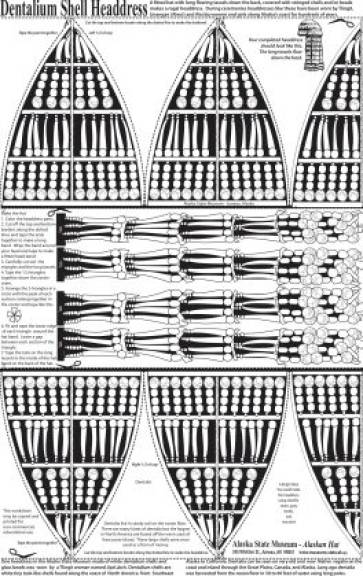
Woman’s Headdress (makes a doll sized headdress)
Both hat patterns are meant to be printed life sized. This can be done at a Kinkos or FedEx printing facility.
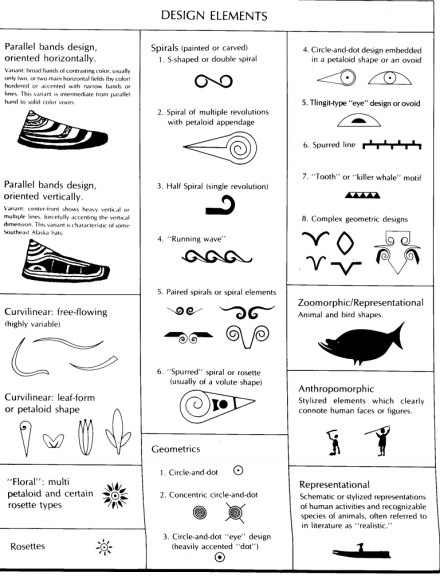
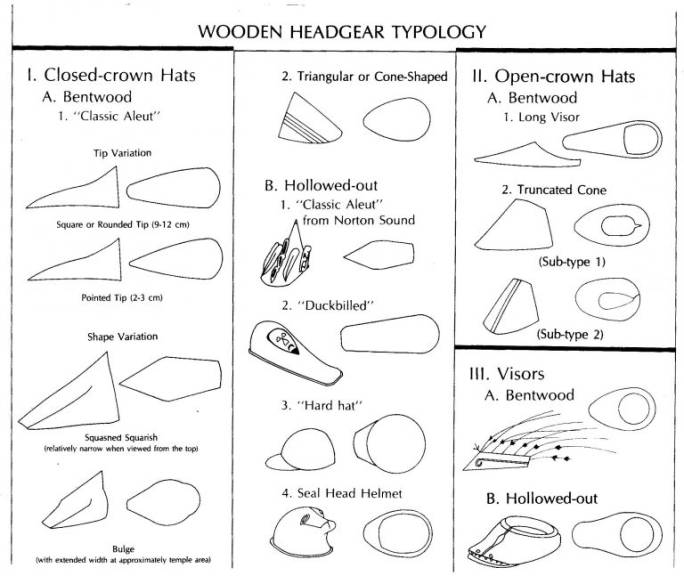
Alutiiq Bentwood Hat Project - An alternative hat making project from the Alutiiq Museum website. This can be done as a classroom project, or as a rainy day project at Metini / Fort Ross. Please note - Materials and instruction are NOT provided at Metini / Fort Ross or by your ELP Instructor.
Animal Masks Project - This is a project from the Alutiiq Museum. This can be done as a classroom project, or as a rainy day project at Metini / Fort Ross. Please note - Materials and instruction are NOT provided by Fort Ross and your ELP Instructor.
Hunters Soap Carving – Fun in-class activity or as an onsite alternative rainy day project.
Materials –
- Bar of Soap (fragrance free)
- Clay carving tools, inexpensive wooden and plastic tools
- Pictures of Alaska Native Whale Bone or Walrus Ivory Carvings
- Pictures of Alaska Native Wildlife: National Geographic is a great resource
Two books on soap carving –
- Soap Carving by Suzuki. A book for beginners/children
- Carving in Soap by Suzuki. For advanced carvers, step by step photos of the process of carving eight different animals
Hunters Dart Throwing Activity – To be made ahead of time, activity done at Metini / Fort Ross.
Materials –
- Hula Hoops (can be provided for use by the ELP Instructor)
- Throwing board and dart (can be provided for use by the ELP Instructor)
Procedure – Parent Lead rolls or throws the hula hoop into the air. The students throw poles (spears) through the hoop. Students learn how hard it is to hit a moving object.
This is a variation of a Miwok Indian game. One person would roll a wooden hoop along the ground, while another would throw a wooden pole through it.
– Game idea courtesy of Bill Singer at Santa Rosa Charter School.
For detailed instructions: Aleut Dart Construction